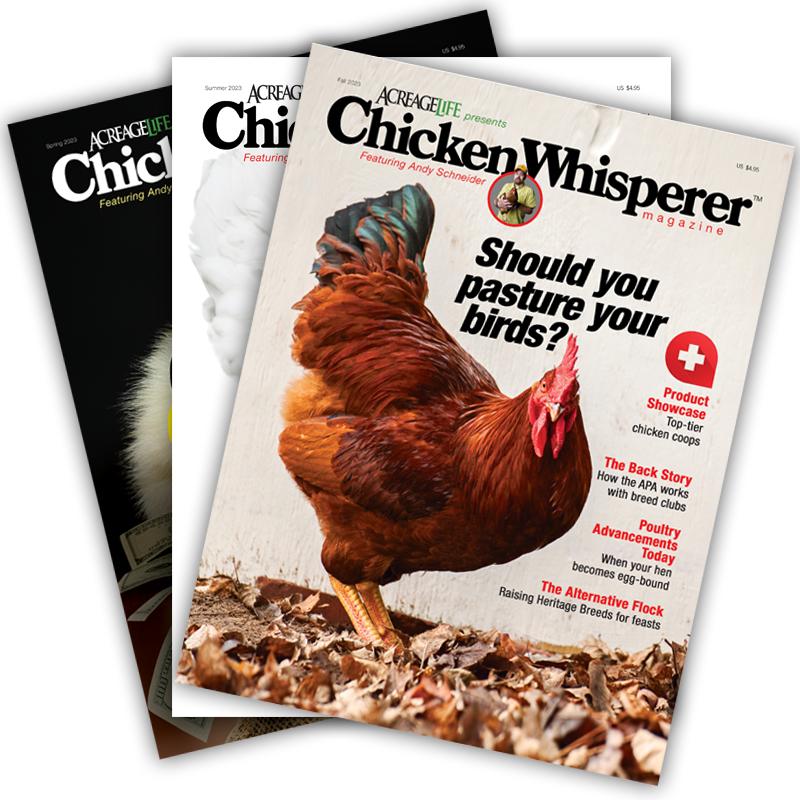Smart Hacks for Happy Chicks
A Foolproof Guide to Better Brooding


Raising baby chicks can be a rewarding experience, and while it’s not complicated, making a few adjustments to your brooder setup can make things even easier.
Whether you’re a first-time chicken keeper or a seasoned pro, understanding the essentials for raising healthy chicks is key.
Baby chicks only need five things to thrive in their early stages before they move into the coop: heat, food, water, space and light.
Let’s explore how to make these needs simpler and ensure your chicks are happy and healthy.
Heat
Newly hatched chicks can’t regulate their own body temperature, so they rely on you to provide warmth until they can grow enough feathers to keep themselves warm.
The first week, keep them at 95 degrees Fahrenheit and reduce the temperature by 5 degrees Fahrenheit each week. They typically need heat for four to six weeks. If you’re brooding in summer, four weeks may suffice, but lower temperatures may require six weeks of heat.
There are a few common heating options to consider:
- Traditional 250-watt lightbulb: This is the most common heat source but be cautious about fire hazards. You can adjust the height of the bulb to control the temperature. With this method, always use a thermometer to be certain. For extra safety, consider a lamp with a built-in switch that automatically turns off if the lamp falls.
- Radiant heat plate: These newer options are becoming increasingly popular for their safety and energy efficiency.
Safer: They don’t get as hot as light bulbs and only heat the chicks, not the surrounding air.- More efficient: They use only 10% of the power of a 250-watt bulb and can save you money over time. It takes about two chick raising cycles for it to pay for itself.
- Easier to regulate: The chicks can adjust their heat by moving closer to or further from the plate, so you don’t need to keep such a close eye on the temperature. I do recommend having one side of the brooder closer to the chicks so there is one end that is warmer than the other.
Food
For optimal growth, feed your chicks high-quality starter feed. Follow the bag instructions, but generally, egg laying chicks should be fed starter until about 17 weeks old.
When it comes to feeders, there are a few options:
- Traditional mason jar feeders: While functional, they can result in some waste when refilling.
- Top-loading feeders: These feeders make it easier to fill without flipping them over, which can help reduce waste.
- Feed spill prevention: Look for feeders designed to prevent chicks from spilling food by creating a barrier around the edges or using small holes to restrict their access.
Water
Fresh, clean water is crucial, but chicks are notorious for making a mess of their waterers. This can lead to unsanitary conditions and diseases like coccidiosis, which can be deadly. A simple solution is to use multiple waterers, so you can always have one clean and ready to swap out when necessary.
Alternatively, nipple waterers are a great low-maintenance option. You can make your own by drilling a hole in a container and hanging it just above the chicks’ heads or purchase a pre-made nipple waterer. The biggest advantage is that they keep water clean, reducing maintenance time and helping prevent chick losses.
Space
Your chicks will need adequate space to grow. The general rule is about one-half square foot per chick. For example, 50 chicks would need an area about five feet across.
Keeping the space clean and dry is just as important. Most people use wood shavings or another bedding material, but if you want an easier setup, consider a mesh floor brooder. This allows waste to fall through to a drop pan, which you can easily remove and clean instead of dealing with soiled bedding.
Light
Chicks need light, but a consistent light pattern is best for their health. A natural light rhythm (bright during the day, dark at night) helps them maintain a healthy sleep cycle.
If you’re using a 250-watt light bulb, a red bulb is recommended to avoid overly bright light all day. If you’re using a radiant heat plate, normal room lighting during the day and a night light are ideal. This helps prevent the chicks from becoming disoriented or piling up in a corner during the night.
Raising baby chicks doesn’t have to be overwhelming. With the right setup and by meeting their basic needs for heat, food, water, space and light, you can ensure your chicks grow into healthy, happy chickens.
Keep things clean, provide the right environment and enjoy the experience!
Tags:Healthy Flock

Chicken Whisperer is part of the Catalyst Communications Network publication family.











